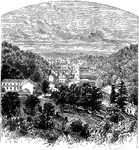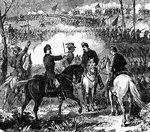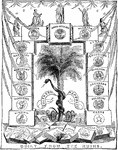Clipart tagged: ‘Arkansas’

Hot Springs, Arkanasas
An view of Hot Springs, Arkansas which is nestled in a valley between two mountains. Hot Springs is…

George Izard
George Izard (21 October 1776 - 22 November 1828) was a General in the United States Army during the…

James Miller
James Miller (25 April 1776 - 7 July 1851) was a member of the United States House of Representatives…

Battle of Pea Ridge
"Battle of Pea Ridge, Ark., fought March 6th, 7th and 8th, 1862, between the Federal forces, 13,000…

Battle of Pea Ridge
"Battle of Pea Ridge, Ark., fought March 6th, 7th and 8th, 1862, between the Federal forces, 13,000…

Battle of Pea Ridge
"Battle of Pea Ridge, Ark., fought March 6th, 7th and 8th, 1862, between the Federal forces, 13,000…

Arkansas State Penitentiary
An illustration of Arkansas State Penitentiary as pictured in 1874. The prisoners housed were the main…

Southern Republic Built from the Ruins
A political cartoon of the Southern states being built from the ruins after the Civil War.

Arkansas State Capital
The Arkansas State capital Building, located in Little Rock, is the seat of government of the state…




